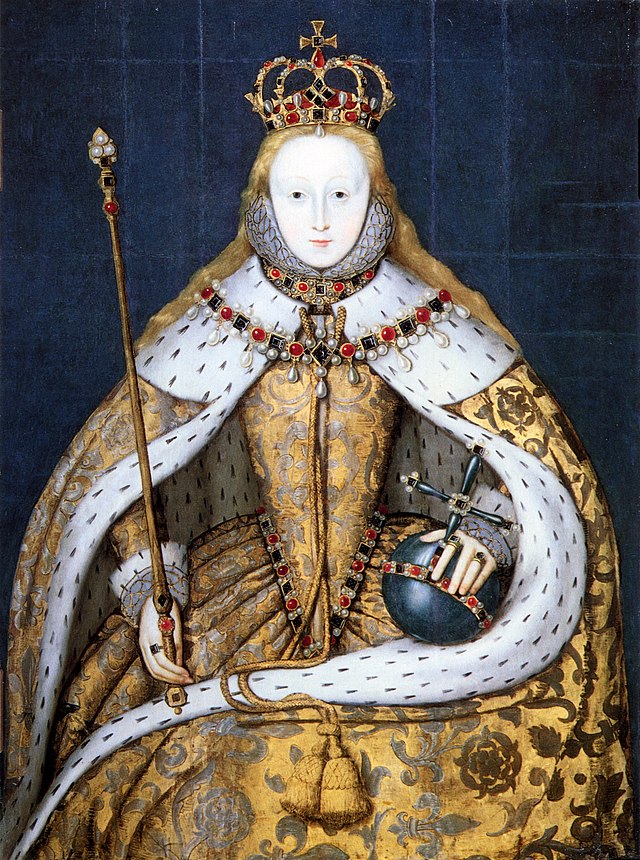Middle parting was popular and for the Elizabethans and if people have a tall forehead, it meant they are intelligent. So,they rolled their hair back into the tight curls which helps to present a bigger forehead. Some people even shaved their hair back up to 3 inches as well.
The central parting and braids were common among women from the lower class.
Hair could be dyed from recipes given in beauty treatises and because Queen Elizabeth had natural red curly hair, the red hair look had been followed by many of the nobility of the Elizabethan era. Shades of blonde hair were also fashionable at their period of time as well, so Upper Class women followed this fashion and might even dye their hair yellow with a mixture of celandine, oil, cumin seed and saffron.
Young women like to keep their hair long and their natural long hair was a sign of virginity.
 |
| http://en.wikipedia.org/wiki/Elizabeth_I_of_England#mediaviewer/File:Elizabeth_I_in_coronation_robes.jpg 'The Coronation of Elizabeth' By an unknown artist Created between 1600 and 1610 copy of a lost original of c. 1559 |
Book reference:
- Richard Corson (2005). Fashion In Hair: The first five thousand years. 3rd ed. London: Owen, Peter Limited.
-Aileen Ribeiro (2011). Facing Beauty: Painted Women & Cosmetic Art. New Haven: Yale University Press.
-Richard Corson (2005). Fashion In Makeup: From ancient to modern times. 3rd ed. New York: Peter Owen Publishers.
No comments:
Post a Comment